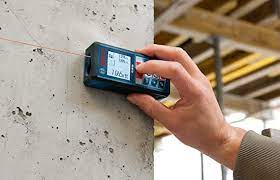Stripped screws can be more than just an annoyance; they can significantly impact productivity and even lead to costly damages if mishandled.
Often arising from over-tightening, corrosion, or using incorrect tools, these frustrating fasteners have left many individuals feeling defeated.
However, armed with the right strategies and tools at your disposal, you can turn the tables on stripped screws and emerge victorious in your repair endeavours.
In this guide, we will explore methods such as using rubber bands, specialized extraction tools, heat application, or even resorting to unconventional yet effective approaches like using superglue or creating new slots for grip.
Table of contents
What is a Stripped Screw?
A stripped screw is a common hardware issue that occurs when the slot or recess in the screw head becomes damaged, making it difficult to tighten or loosen with a screwdriver.
This can happen due to over-tightening, using the wrong size or type of screwdriver, or general wear and tear over time.
One fresh insight into dealing with stripped screws is utilizing alternative methods such as using rubber bands, super glue, or specialized extraction tools to remove them.
Another perspective on this issue is adopting preventative measures like taking care when tightening screws and ensuring proper tools are used from the outset.
By understanding what a stripped screw is and learning new techniques for removing them, individuals can save time and frustration when faced with this common hardware problem.
Recognizing the causes of stripping screws and seeking out innovative solutions empowers individuals to tackle hardware issues with confidence and efficiency.
Read ALSO: How to Increase PH in Pool | Practical Steps
Stripped Screw Preparation
Removing a stripped screw can be a frustrating experience, but with the right preparation and tools, it can be a relatively straightforward task.
Here’s a guide on how to prepare and gather the necessary tools to tackle stripped screws effectively:
Preparation:
- Assess the Situation: Before attempting to remove the stripped screw, carefully examine the screw head and surrounding area. Determine the severity of the damage and identify any potential obstacles, such as tight spaces or delicate materials.
- Clean the Screw Head: Use a clean cloth or brush to remove any dirt, debris, or corrosion from the screw head. This will provide a better surface for the tools to grip.
- Lubricate the Screw: Apply a lubricant, such as WD-40 or penetrating oil, to the screw head. The lubricant will help to loosen any rust or corrosion and make the screw easier to turn.
- Choose the Right Tool: Select the appropriate tool based on the type of screw and the severity of the stripping. Common options include:
- Rubber Band: For lightly stripped screws, a rubber band placed over the screw head can provide additional grip for the screwdriver.
- Pliers: For more severely stripped screws, locking pliers or vice grips can offer a strong grip to turn the screw.
- Screw Extractor: A screw extractor is a specialized tool designed to grip and remove stripped screws. It comes in various sizes and styles to match different screw types.
- Drill and Drill Bits: As a last resort, a drill can be used to drill out the screw carefully. Select a drill bit slightly smaller than the diameter of the screw to avoid damaging the surrounding material.
Read ALSO: How Does Fluorescent Lamps Work? Full Guide
Required Tools:
- Screwdriver Set: A set of screwdrivers with various tips and sizes to match the type of screw you’re dealing with.
- Rubber Bands: A pack of rubber bands to use for lightly stripped screws.
- Locking Pliers or Vice Grips: A pair of locking pliers or vice grips to provide a strong grip for more severely stripped screws.
- Screw Extractor Set: A set of screw extractors in various sizes to handle different screw types and stripping severity.
- Drill and Drill Bits: A power drill with a set of drill bits, including one slightly smaller than the diameter of the screw for drilling out if necessary.
- Lubricant: WD-40, penetrating oil, or a similar lubricant to help loosen the screw.
- Clean Cloth or Brush: A clean cloth or brush to remove debris from the screw head.
- Safety Glasses and Gloves: Safety glasses to protect your eyes from flying debris and gloves to protect your hands from the tools.
With these preparation steps and the necessary tools at hand, you’ll be well-equipped to tackle a stripped screw and remove it effectively.
Methods to Remove Stripped Screws
Removing a stripped screw can be a frustrating experience, but with the right methods and tools, it can be a relatively straightforward task. Here are three effective methods for removing stripped screws:
1. Rubber Band Method:
The rubber band method is a simple and effective technique for removing lightly stripped screws. It’s particularly useful for screws with Phillips or slotted heads.
Steps:
- Place a rubber band over the stripped screw head, ensuring it fits snugly around the edges.
- Insert a screwdriver of the appropriate size into the screw head, pressing firmly against the rubber band.
- Apply steady pressure while turning the screwdriver counterclockwise to remove the screw. The rubber band provides additional grip, preventing the screwdriver from slipping.
2. Using a Screw Extractor:
For more severely stripped screws, a screw extractor is a specialized tool designed specifically for this purpose. Screw extractors come in various shapes and sizes to match different screw types and stripping severity.
Steps:
- Select the appropriate screw extractor for the size and type of screw.
- Insert the screw extractor into the stripped screw head, ensuring a tight fit.
- Hammer the screw extractor into the screw head to create a firm grip.
- Using a wrench or socket wrench, turn the screw extractor counterclockwise to remove the screw.
3. Applying Heat or Cold:
In some cases, applying heat or cold can help loosen a stripped screw, making it easier to remove.
Steps:
Heat Method:
- Use a heat gun or soldering iron to apply heat to the stripped screw head. Avoid overheating the surrounding area, as this could damage the material.
- Once the screw head is warm, try removing it with a screwdriver. The heat may help loosen the screw and allow for easier removal.
Cold Method:
- Place a cold compress or ice pack on the stripped screw head for a few minutes. The cold can shrink the metal slightly, making it easier to remove.
- Once the screw head is chilled, try removing it with a screwdriver. The cold may help loosen the screw and allow for easier removal.
Remember to exercise caution when applying heat or cold, as extreme temperatures can damage the surrounding material or even cause the screw to break.
How to Avoid Stripping Screws
Preventing stripped screws is crucial for maintaining the integrity of your tools and equipment. Here are some effective practices to avoid stripping screws:
- Use the Right Size Screwdriver: Always select a screwdriver that precisely fits the screw head. Using an undersized screwdriver will cause it to slip and damage the screw head, while an oversized screwdriver can deform the screw head.
- Apply Steady and Consistent Pressure: Avoid applying excessive force or abrupt movements while turning a screw. Instead, apply steady and consistent pressure to ensure the screwdriver engages properly with the screw head.
- Avoid Overtightening: Tighten screws until they are snug but not overly tight. Overtightening can cause the screw head to deform or strip, especially in soft or brittle materials.
- Lubricate Threads: For stubborn or corroded screws, consider applying a lubricant, such as WD-40 or penetrating oil, to the screw threads. This will help reduce friction and make the screw easier to turn.
- Drill Pilot Holes: For larger screws, drilling a pilot hole slightly smaller than the screw diameter can help guide the screw and prevent stripping. This is particularly beneficial for hard or dense materials.
- Use Quality Tools: Invest in high-quality screwdrivers with hardened tips and ergonomically designed handles. This will provide better grip and control and reduce the risk of slippage.
- Clean the Screw Head: Before attempting to remove a screw, clean the screw head and surrounding area to remove debris or corrosion. This will ensure a better grip for the screwdriver.
- Consider Alternatives: If a screw is particularly difficult to remove, consider using alternative methods, such as screw extractors or drilling out the screw, as a last resort.
By following these simple practices, you can effectively prevent stripped screws and maintain the integrity of your tools and equipment.
Read ALSO: How To Install Weatherstripping Doors: Tips And Guidelines
Tips and Tricks for Removing Stripped Screws
Here are some tips and tricks to help you tackle stripped screws and get them out without damaging your equipment:
Vice Grip Pliers:
Vice grip pliers can provide a strong grip for removing stripped screws, especially those with hexagonal or flat heads. Clamp the vice grip pliers tightly around the stripped screw head, ensuring a secure grip. Turn the vice grip pliers counterclockwise to remove the screw.
Drilling Method:
As a last resort, drilling out the screw may be necessary for severely stripped or damaged screws. Select a drill bit slightly smaller than the diameter of the screw to avoid damaging the surrounding material.
Lubrication:
Applying a lubricant, such as WD-40 or penetrating oil, to the screw threads can help loosen stubborn or corroded screws. Allow the lubricant to penetrate the threads for a few minutes before attempting to remove the screw.
Heat Application:
For stubborn screws, applying heat can help expand the metal and loosen the screw. Use a heat gun or soldering iron to apply heat to the stripped screw head for a short duration. Once the screw head is warm, try removing it with a screwdriver or screw extractor.
Cold Application:
Applying cold can help shrink the metal slightly and make it easier to remove the screw. Place a cold compress or ice pack on the stripped screw head for a few minutes. Once the screw head is chilled, try removing it with a screwdriver or screw extractor.
Left-Handed Drill Bit:
For screws that are particularly difficult to remove, a left-handed drill bit can be used to reverse the screw. Insert the left-handed drill bit into the stripped screw head and slowly turn it counterclockwise.
Read ALSO: How to Do Faucet Repairs in Less time | Full Guide
FAQs
The majority of stripped screws are removable, and there are numerous approaches and strategies you can employ to extract them. Although a screw extractor tool is undoubtedly the ideal tool for the job, you have a lot of other options if you don’t have one.
Skilled do-it-yourselfers are aware of how to stop screws from becoming stripped so they can spare themselves the trouble of having to remove them. Using old drill bits or the incorrect size or kind of screwdriver are two of the most frequent causes of stripped screws.
You run the danger of destroying the substance the stripped screw is in when removing it, and certain techniques carry a higher risk than others. It’s advisable to proceed cautiously and slowly, particularly while handling power tools. Wear safety goggles and work gloves when using extractor pieces, and don’t be afraid to stop and take a break if you start to feel frustrated.
Conclusion
Removing stripped screws can be a frustrating and time-consuming task, but with the right tools and techniques, it is entirely possible to accomplish.
Whether using a rubber band, a specialized screw extractor, or a rotary tool, there are various methods available to tackle this common issue.
Additionally, taking preventative measures such as using proper screwdrivers and drilling pilot holes can help avoid this problem.
By following the step-by-step guide outlined in this article and exercising patience and precision, anyone can successfully remove stripped screws without causing further damage.





